
Our Reverse BMI Calculator helps you calculate the weight you need to aim for to achieve a healthy body mass index (BMI).
For instance, if you are 70 inches (177.8 cm) tall and weigh 201 pounds (91kg), your body mass index would be about 28.8. A BMI of 28.8 falls in the overweight range. So, you may want to reduce your body weight until you are within the healthy adult range of 18.5 to less than 25.
If you choose to reduce your BMI to a healthy value of 22, you must first determine how much weight to lose. Our Reverse BMI Calculator (view the app here) saves you the trouble of having to do the math yourself.
We present two versions of the calculator: The first in metric units (kilograms and centimeters) and the second in imperial units (pounds and inches). All you need do is enter your current weight, height, and the body mass index you desire. Our Reverse BMI Calculator automatically computes the weight you need to aim for to achieve it.
It also computes your current BMI and calculates how much weight you need to lose to achieve a healthier one.
If you don’t know whether your current BMI is in the healthy range or what healthy range to aim for, our calorie counter app helps. It tells you whether you are underweight, normal, overweight, or obese. It also computes how many calories you need to cut to achieve a modest or drastic weight loss.
You may also consult this chart for guidance about a healthy body mass index target.
We also offer detailed tutorial instructions for readers interested in learning how to do Reverse BMI Calculations and compute their body mass index by themselves.
Contents:
Reverse BMI Calculator: Metric/Imperial System
Adults: BMI classification according to health risk
Children and teenagers: BMI classification according to health risk
How a Reverse BMI Calculator works
How to calculate body mass index
—Metric system: Kilograms and meters/centimeters
—Imperial system: Pounds and inches
Reverse BMI Calculator: How to derive a formula for weight
—Imperial System: lbs and inches
Reverse BMI Calculator: Limitations of body mass index
Why you need to keep a healthy body mass index
Reverse BMI Calculator: Metric/Imperial System

Enter your height, current body weight, and the body mass index you are aiming for, and our Reverse BMI Calculator (see below) computes the following:
- Your current BMI
- The body weight to achieve your desired BMI
- The weight loss you need to achieve your desired BMI
Daily calorie calculator

Enter your sex, age, weight, height, activity level, and weight goal, and our calorie counter app calculates the following:
- Body Mass Index (BMI)
- Basal Metabolic Rate (BMR)
- Recommended total calories per day based on your weight loss or gain goal
- Macronutrient balance: Recommended daily carbs, protein, and fat intake
[calorie_calc id=”10193″]
We also recommend this calorie deficit calculator designed by Dr. Kevin Hall and colleagues at the National Institute of Diabetes and Digestive and Kidney Diseases. It allows you to calculate how many calories you need to cut from your diet to achieve a specific weight loss goal in a specified time frame.
If our calorie counter says you are overweight, you may want to consult your healthcare provider for guidance.
Typically, a weight loss plan includes lifestyle changes, such as adopting a health-promoting diet plan. You may adopt a dietary intervention plan such as carb cycling for weight loss.
You may need to cut down drastically on empty calories and increase your intake of healthier nutrient-dense foods. Eat plenty of fruits (such as apples and bananas), vegetables, and adequate amounts of high-protein foods.
You may also increase your physical activity level by adopting strategies to increase your total daily energy expenditure (TDEE). Such strategies may include increasing your energy expenditure during sedentary hours by:
a.) Increasing leg movement while sitting
b.) adopting dynamic sitting or chair-based fidgeting
c.) You may engage in exercises such as trampoline exercise and skateboarding.
d.) You may also do calisthenics, such as bodyweight squats, weighted squats, push-ups, and sit-ups.
How to interpret BMI
The number representing your BMI indicates whether you are underweight, overweight, or have a healthy weight for your height.
Experts use body mass index and waist circumference (WC) to assess the risk of developing health problems associated with being overweight or underweight.
Health professionals use different BMI classification systems for adults (over 18 years old), children, teenagers, pregnant, and lactating women.
Adults: BMI classification according to health risk
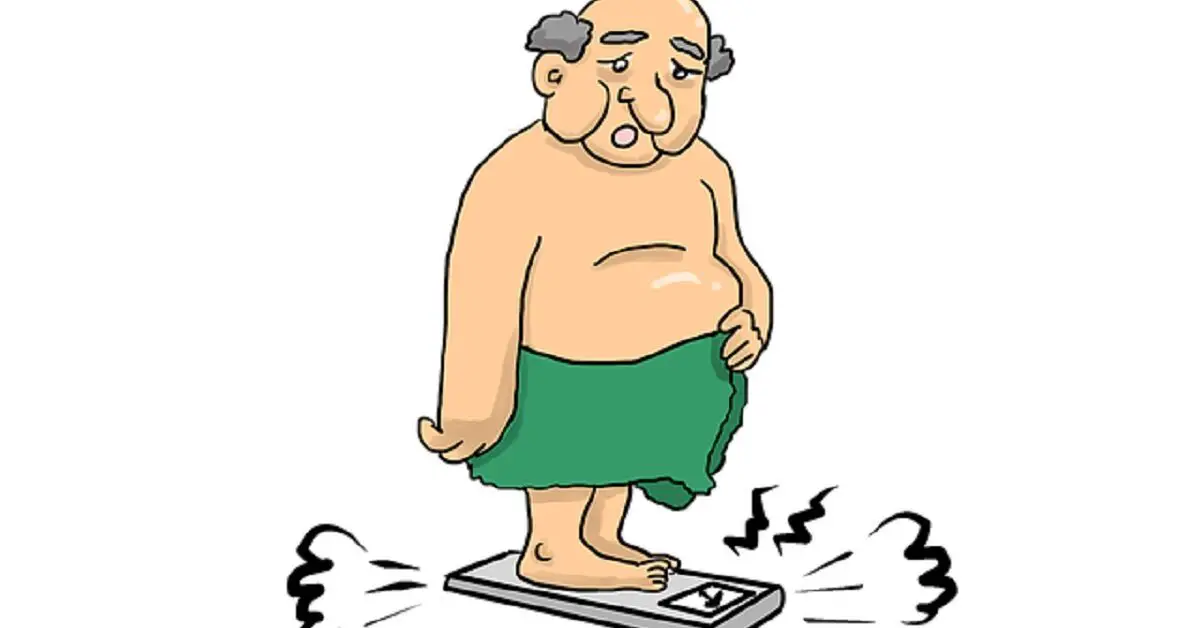
The table below shows the classification system for adults in seven health risk categories:
| BMI | Classification | Risk of health problems |
| Less than 18.5 (<18.5) | Underweight | Increased risk |
| 18.5 to less than 25 | Normal, healthy | Low risk |
| 25 to less than 30 | Overweight | Increased risk |
| 30 to less than 35 | Obese class I | High risk |
| 35 to less than 40 | Obese class II | Very high risk |
| 40 or higher | Obese class III | Extremely high risk |
Being overweight means you have excessive body fat. Note that for adults (over 18), the classification does not depend on sex.
Children and teenagers: BMI classification according to health risk

Although BMI is calculated for children and teenagers the same way as for adults, it is interpreted differently.
The interpretation of BMI in teenagers depends on age and sex.
During childhood and the teenage years, the amount of body fat that health experts consider healthy changes with age. The pattern of change with age also depends on sex.
Teenage girls tend to have more fat than boys.
Researchers designed the BMI charts shown below for children and teenagers. They show how body mass index varies with age and sex among children and teenagers. The charts also show the range of healthy values (5th to less than 85th percentile) that children and teenagers should aim for:
After computing your child’s BMI, you can consult the charts to determine whether they are underweight, normal, overweight, or obese.
[Note: You can use a ruler or any straight-edged object to trace and determine the points where the vertical age lines intersect with the percentile curves.]
BMI-for-age – Boys Growth Chart
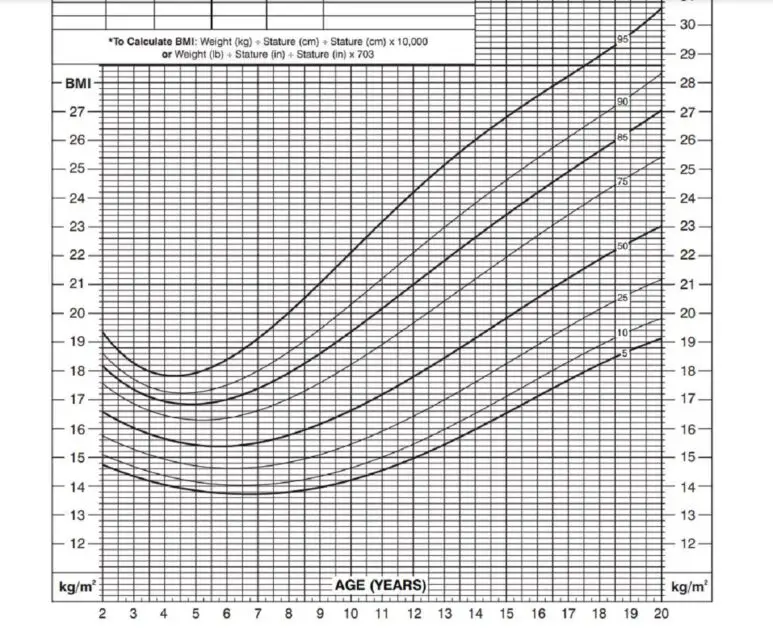
BMI-for-age – Girls Growth Chart
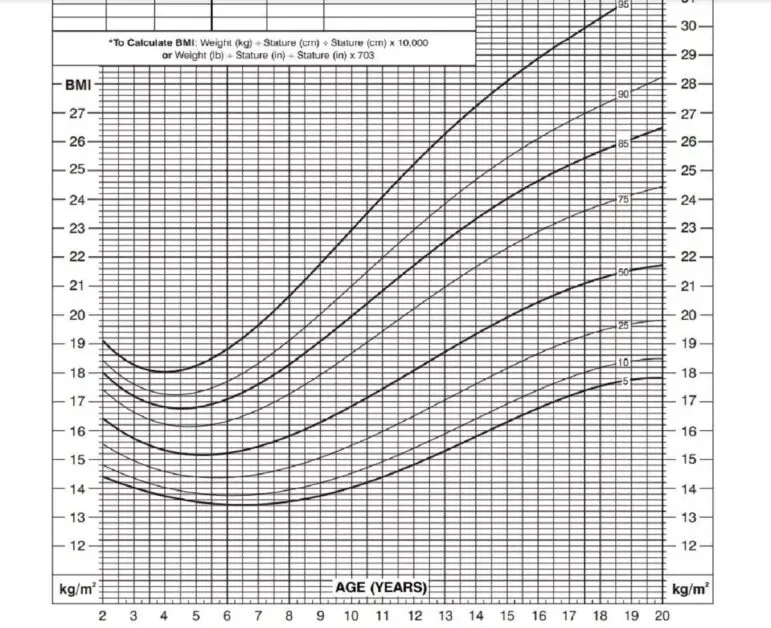
Weight classes (underweight, overweight, and obese) for children aged 2 to 19 are based on percentiles. Health experts calculated the percentiles using data collected about the weight ranges of a large number of children and teenagers.
| BMI | Category |
| Below the 5th percentile | Underweight |
| 5th to less than 85th percentile | Normal weight |
| 85th to less than 95th percentile | Overweight |
| 95th percentile or greater | Obese |
The charts show that the healthy BMI range for a 16-year-old boy is 17.00 to less than 24.10. For 16-year-old girls, it is 16.75 to less than 24.50.
How a Reverse BMI Calculator works
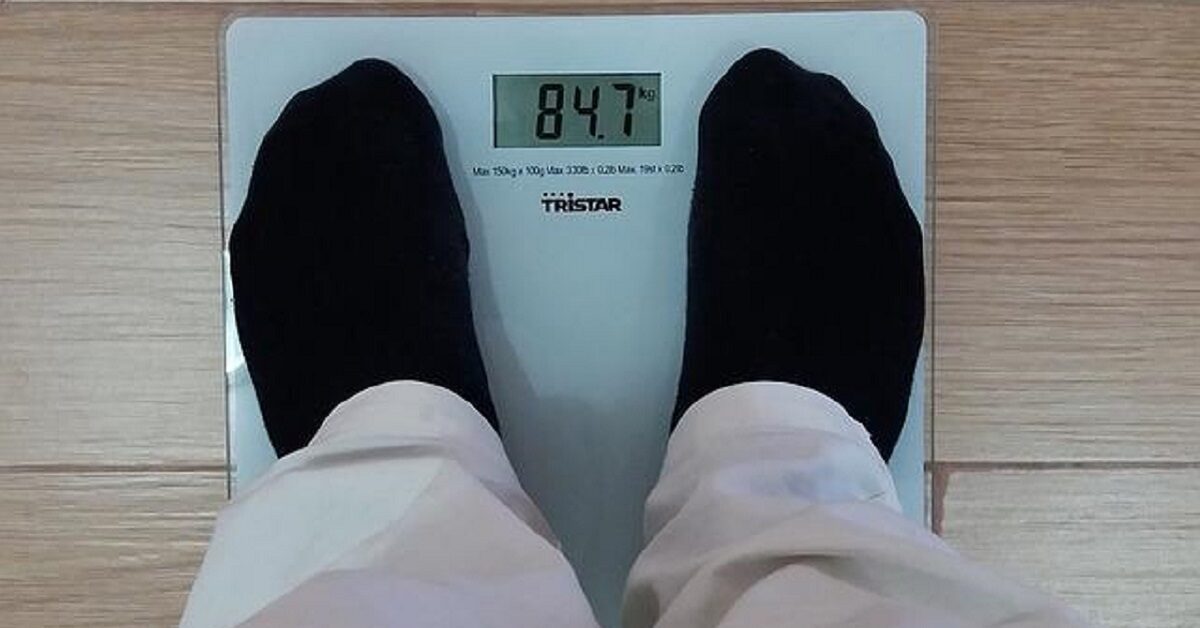
To understand how our Reverse BMI Calculator works, you first need to know how to calculate body mass index.
Body mass index (BMI) is the ratio of your body weight and height.
In mathematical terms, BMI is the ratio of your weight (in kilograms or pounds) and the square of your height (in meters/centimeters or inches).
How to calculate body mass index
You can express the BMI formula using the metric or the imperial measurement system.
Metric system: Kilograms and meters/centimeters
The formula for body mass index in the metric system is weight in kilograms divided by the square of height in meters.
If you know your height in centimeters, you may convert it to meters by dividing by 100 (Thus, 177 centimeters = 1.77 meters).
The formula for BMI (B) in metric units = Weight in kilograms/(Height in meters)2
Thus, B = kg/m2
Alternatively, if you want to do the calculation using your height in centimeters, you may use the formula below:
B = [Weight(kg)/(Height in cm)2] x 10,000
Example 1:
John is an adult. Calculate his BMI if his height is 177.8 centimeters and weight is 91kg.
Step 1: Convert height in centimeters (cm) to meters (m) by dividing by 100:
177.8/100 = 1.778 meters.
Step 2: B = 91/(1.778)2
BMI= 91/3.161284 = 28.8
Example 2:
If you want to calculate in centimeters, instead of meters:
B = [91/(177.8)2] x 10,000
B = (91/31612.84) x 10,000
B =0.00287857718 x 10,000
BMI = 28.8
A body mass index of 28.8 is in the overweight range (see weight/health risk classification table above). Thus, we may conclude that John is likely overweight and may need to lose some kilograms.
Imperial system: Pounds and inches
The formula for body mass index in the imperial system is weight in pounds divided by the square of height in inches, multiplied by 703.
BMI = [Weight(lbs)/(Height in inches)2] x 703
Example 3:
Calculate John’s BMI if his height is 70 inches (177.8 centimeters) and his weight is 200.6lbs( 91kg).
B = [200.6/(70)2] x 703
B = (200.6/4900) x 703
BMI = 0.04094 x 703 = 28.8
Note that John’s calculated BMI using the imperial system is the same as the value that we previously calculated using the metric system.
Reverse BMI Calculator: How to derive a formula for weight
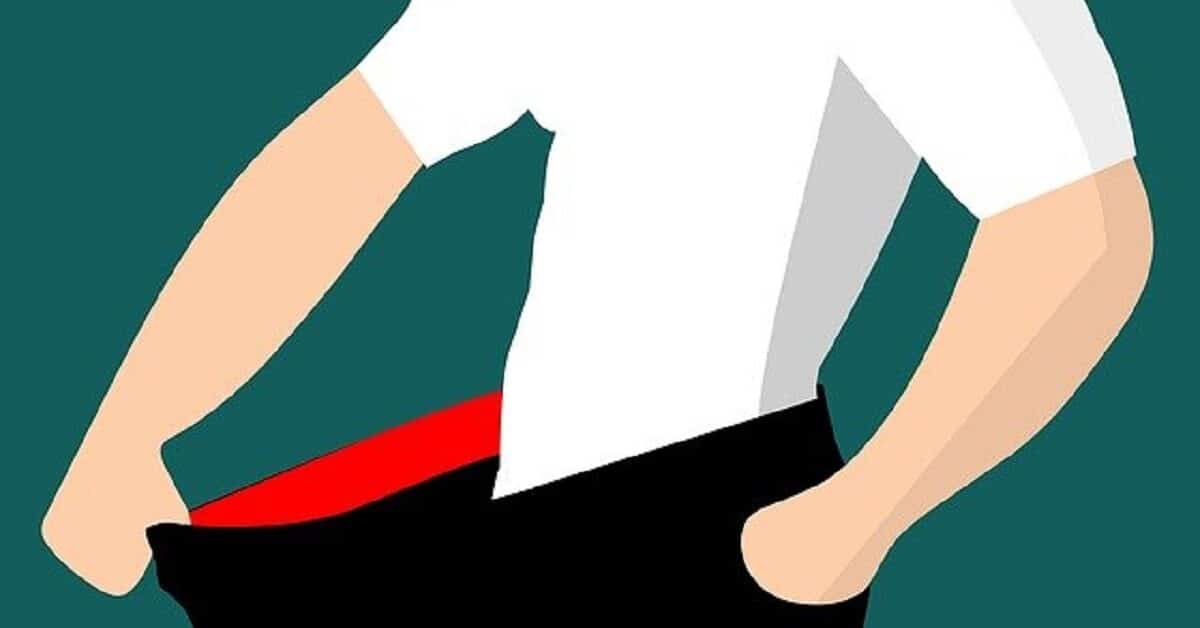
John’s BMI of 28.8 falls in the overweight range. He may decide to lose some weight to fall into the healthy range.
Assuming he aims for a healthy value of 22, he will need to calculate the body weight required to achieve his preferred body mass index.
John could use our Reverse BMI Calculator (click this link to use the app) or do the calculation by himself, as shown below:
Metric system: kg and m/cm
Example 4:
Calculate how much weight John needs to lose to achieve a BMI of 22 if his height is 177.8 centimeters and his current body weight is 91kg.
With the metric system (kilograms and meters/centimeters), you may derive a Reverse BMI formula for body weight as shown below:
BMI = Weight (W) in kilograms/(Height in meters)2
Step 1: Solve the equation for W by cross-multiplying:
Weight = BMI x (Height in meters)2
Step 2: Calculate the body weight John should aim for to achieve a BMI of 22.
W = 22 x (1.778)2
W = 22 x 3.161284 = 69.5kg
John needs to drop his weight to 69.5kg to achieve a healthy BMI of 22.
If John is currently 91kg, he needs to lose (91-69.5) = 21.5 kg.
You may do the calculation in centimeters (instead of meters) as shown below:
BMI = [Weight(kg)/(Height in cm)2] x 10,000
Step 1: Solve the equation for weight
a.) Cross multiply: W(kg) x 10,000 = BMI x (Height in cm)2
b.) Divide both sides of the equation by 10,000: W = [BMI x (Height in cm)2]/10,000
Step 2: Calculate the weight John should aim for to achieve a BMI of 22.
Weight = [BMI x (Height in cm)2]/10,000
W = [22 x (177.8)2]/10,000
W = [22 x 31612.84]/10,000
W = 695482.48/10,000
Weight = 69.6kg
Imperial System: lbs, inches
With the imperial system, you may derive a Reverse BMI formula for weight as shown below:
Example 5:
Calculate how much weight John needs to lose to have a BMI of 22 if his height is 70 inches (177.8cm) and his current weight is 200.6lbs (91kg).
With the imperial system (pounds and inches), you may derive a Reverse BMI formula as shown below:
BMI (B) = [Weight(lbs)/(Height in inches)2] x 703
Step 1: Solve the equation for weight
a.) B = [Weight(lbs)/(Height in inches)2] x 703
b.) B = W(lbs) x 703/(Height in inches)2
c.) Cross multiply: W(lbs) x 703 = B x (Height in inches)2
e.) Divide both sides of the equation by 703: Weight (lbs) = [B x (Height in inches)2]/703
Step 2: Calculate the weight John needs to aim for to achieve a BMI of 22, using the imperial system.
Weight(lbs) = [B x (Height in inches)2]/703
W = [22 x (70)2]/703
W = [22 x 4900]/703
W = 107800/703 = 153.34lbs
John needs to drop his weight to 153.34lbs to achieve a healthy body mass index of 22.
If he is currently 200.6lbs, he will need to lose (200.6-153.34) = 47.26lbs.
Reverse BMI Calculator: Limitations of body mass index

If our calorie counter/BMI app indicates that your weight falls outside the prescribed healthy range, we recommend that you consult your healthcare provider. Only a trained professional can determine whether your body mass index value indicates you have excess body fat or whether you are underweight.
Since body mass index does not directly measure body fat, it is not considered diagnostic of fatness. For instance, it may give misleading results in athletes and bodybuilders with high lean body mass.
Similarly, women tend to have higher body fat than men, while older people have more fat than younger people.
BMI is thus used only as a screening tool to identify individuals likely to be fat. Further assessments, such as using calipers to measure skinfold thickness, may be required to determine whether an individual with a high body mass index is fat.
More accurate but less readily available methods for measuring fatness include:
- Underwater weighing
- Dual-energy x-ray absorptiometry (DXA)
- Bioelectrical impedance
- Isotope dilution
Health professionals widely use BMI because the methods listed above are expensive. They require special equipment and skilled personnel.
Why you need to keep a healthy body mass index

Medical research studies have reported a strong correlation between being overweight/underweight and many diseases and health conditions.
Being overweight is associated increased risk of health conditions, such as diabetes, heart disease, and cancer.
According to Fruh and associates (2017), overweight and obesity are associated with type 2 diabetes, cardiovascular disease (coronary heart disease and stroke), obstructive sleep apnea, chronic inflammation, oxidative stress, and cancer.
Waist circumference (WC) and BMI in the overweight range are associated with cardiometabolic disease risk factors (CMRFs), such as abdominal obesity, abnormal lipid profile (high LDL cholesterol, low HDL cholesterol, and high levels of triglycerides or dyslipidemia), high blood pressure, insulin resistance, and hyperglycemia (Skonieczna-Żydecka et al., 2020).
CMRFs increase the risk of cardiometabolic diseases, such as stroke, coronary heart disease, diabetes, kidney diseases, and non-alcoholic fatty liver disease.
Studies suggest that even modest weight loss of only 5%-10% can significantly improve health outcomes.
Being underweight is also associated with poor health outcomes.
According to Fagerjord Lorem and associates (2017), thin and underweight people had less favorable self-reported health (SRH) than others.
Underweight people were more likely to experience premature age-related decline in health and vitality than people with a healthy weight.
Roh and associates (2014) found that being underweight was associated with an increased risk of all-cause mortality compared to a healthy body weight.
Being underweight was also associated with excess mortality.

